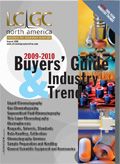Technology Forum: Chromatography Services
One thing all chromatographers know for certain is that, in the words of John Dolan in his April 2006 column, 'It's gonna break.' And when it does, there are a variety of services to choose from in the field of separation science. Our experts explore them here, updating readers on all that is new and innovative in this area.
Who are the primary users of chromatography services (such as consultingservices and training programs)?
Linderman: My company's services portfolio serves a broad range of end customers from the lab technicians, analytical chemists, application scientists and metrology groups to lab managers and site operations managers. The range and diverse needs of our customers reflects the broad use of chromatography technologies in many industries around the world. We see demand for specific services driven by the needs of that customer segment. For instance, in the rapidly emerging BRIC countries (Brazil, Russia, India, China), some of the chromatography users are relatively younger and less experienced than other countries so we see a greater need for training programs to enable the use of the lab equipment. In more mature industries, pharma is a good example, we see sophisticated work underway to harmonize and optimize the laboratory spend and in these cases our consulting services are in demand.

Pizza: The primary users of chromatography services are those individuals/institutions/companies that need analysis or quality control. They include but are not limited to pharmaceutical, biopharm, chemical, food, health care, and many more. With chromatography being such an exacting science, the need for maintenance, calibration, and repair of the equipment is a necessity. Competent training and on going consulting follow along those service issues.
Has the economic downturn affected the use of chromatography services?
Linderman: Certainly, however, customers have cut their capital equipment budgets more quickly than their operating budgets. Although new equipment purchases have waned, the need to keep the current manufacturing lines or labs operational and the revenue stream flowing for a business is more important than ever. As a result, customers are making smarter and more deliberate decisions about their equipment repair and maintenance strategy. We're also being asked questions about how older lab instruments can be reconditioned and put back in service as customers look for creative ways to manage within their operating budget constraints. We do notice that most customers have chosen to stay true with their existing service model as the cost of down equipment can be measured in terms of a manufacturing line being shut down. Many customers choose service contracts as a way to both predictably manage their budgets and reliably get service. Other customers look for ways to engage us in intelligent, remote diagnosis and reporting on their equipment to maximize uptime of their instruments. With some labs closing or consolidating, lab relocation services are also more in demand.
Pizza: While the need to maintain the viability of chromatography equipment will always be the utmost priority of the end user, funding for this end may be restricted by the economic conditions that prevail. Major discounting on contracts as well as "service as needed" seem to prevail in today's economic market.
How have other current events affected chromatography services?
Linderman: Several on-going trends affect customer demand for chromatography services. I've already mentioned the need for more rigorous instrument operation and applications training in some fast-growing countries. Also, as the industry creates more sophisticated instruments, like the new UHPLC and mass spectrometry equipment, the services and training that support these instruments need to ensure that they work not only in the controlled labs of the research scientist, but also in the mass production environment more typical of a CRO or CMO. We watch closely the evolution of the food safety and environmental testing sectors as these segments will have unmet service needs as these industries mature and government scrutiny increases. The Chinese melamine poisonings in the autumn of 2008 is the latest example why the public will demand greater oversight in the future.
We also keep our eye on the academic and government sectors as their service demands will mature with the various government stimulus funding programs put in place during the recession.
Pizza: Over the years, there have been many companies entering the chromatography services arena resulting in a very heavy competitive scenario with costs being the driving factor. Many long-time smaller companies have been unable to compete in this economy with the addition of so many other players.
Participants
Michael Linderman
Agilent Technologies
Mike Pizza
Delta Technical Products

Evaluating the Accuracy of Mass Spectrometry Spectral Databases
May 12th 2025Mass spectrometry (MS) can be effective in identifying unknown compounds, though this can be complicated if spectra is outside of known databases. Researchers aimed to test MS databases using electron–ionization (EI)–MS.

.png&w=3840&q=75)

.png&w=3840&q=75)



.png&w=3840&q=75)



.png&w=3840&q=75)




